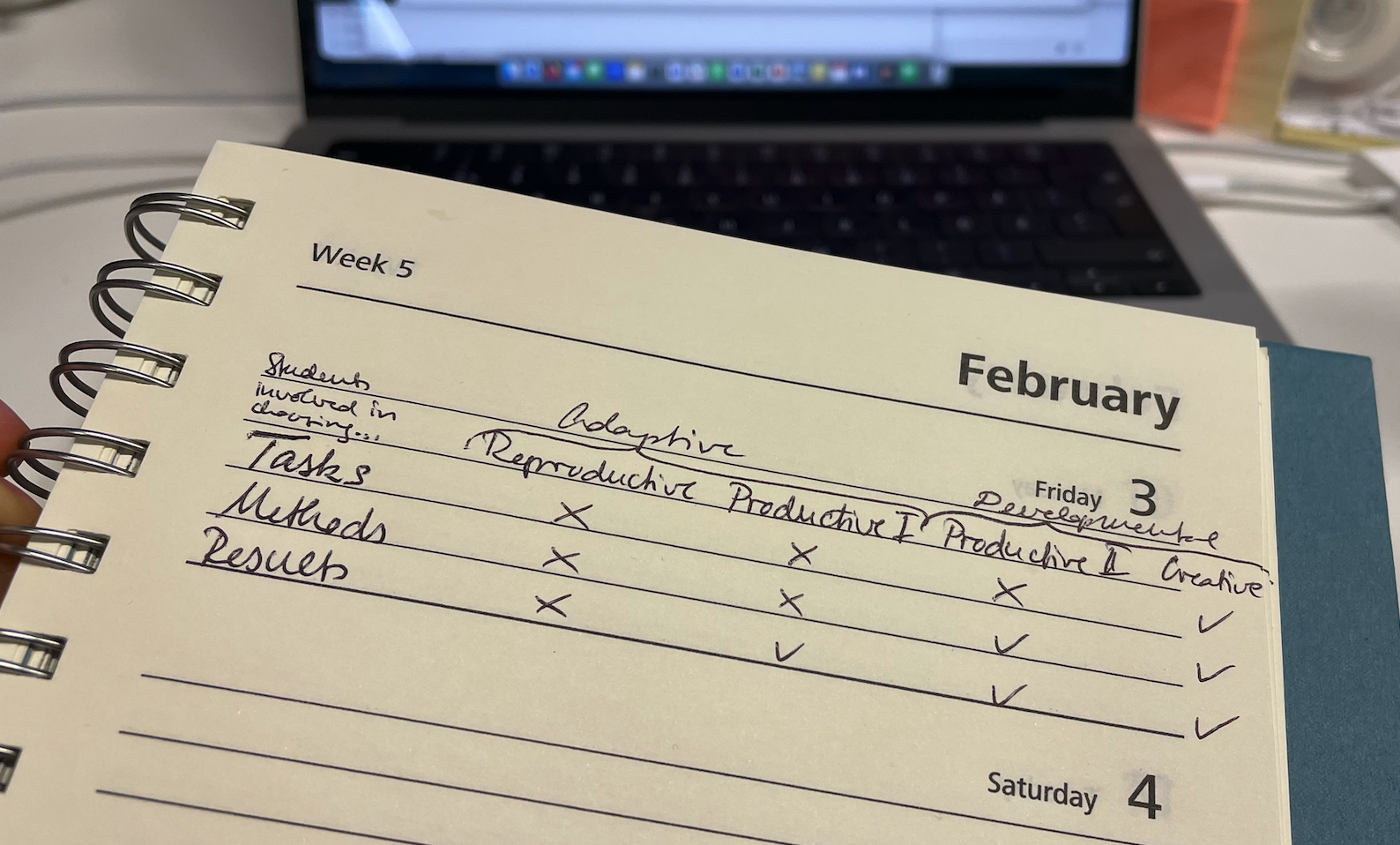
“Integrating learning and work: Problems and prospects”: Currently reading Ellström (2001)
Yesterday, I had a really inspiring chat with a colleague and they mentioned a model by Ellström (2001) that really helps think about how much freedom vs guidance we want to give students. That’s something that we obviously need to consider all the time, especially if we are working towards co-creation: For what tasks or responsibility will more freedom contribute to more learning, towards the intended learning outcomes or other goals, and when we weigh that with the additional amount of time, resources, effort required from the students, is it worth the trade-off? Unfortunately, and not surprisingly, this model doesn’t provide answers to those questions, but it’s still useful when thinking about how authentic learning experiences should be.
The article was written in the context of human resource development, “integrating learning and work” and on the premise that organizational learning, changes to organizational practice, are a) a good thing, and b) depend on individual learning. From this, Ellström (2001) develops a model that distinguishes adaptive learning from developmental learning. Adaptive learning includes reproductive learning, where (and from here on I’ll just apply the model to higher education) students have little say in their learning situation: The learning outcomes, learning activities and assessment are all given. This might be a good way to learn to deal with routine problems, but doesn’t really invite independent or critical thought. In the next step, productive learning, things open up a little bit to allow for students to self-evaluate their learning (which I would not necessarily take as them grading themselves, more like they learn to reflect on how well they did and how they know, and what they would do differently next time), and eventually to think about possible alternative solutions and evaluate them against each other. This means that they have to be able to verbalize goals and evaluation criteria. Lastly in creative learning, a sub-form of developmental learning, on the other hand, students can influence all three, “have to use their own competence and authority to define and evaluate the task, methods, and results” — they are co-creating all aspects of their learning, including questioning the premises of how things have always been done.
A really important point made is that the two modes, adaptive and developmental, are not mutually exclusive, but rather complementary. All four flavors of learning identified above have their place in different contexts, and even in one and the same course session might all be appropriate for different purposes at different times.
Ellström (2001) then discussed factors helping or hindering co-created learning (again, I’m applying to higher ed in my summary):
- Learning potential of the task: Is the task even complex and varied and interesting enough so that students have an opportunity to learn?
- Opportunities for feedback, evaluation, and reflection on the outcomes of actions: are the conditions supporting independent learning?
- the formalization of learning processes: how strict are the rules confining the learning (in terms of standardization of outcomes, who has to be present where when, …?
- student participation in handling problems and developing learning processes: this is where the true co-creation can happen, when students can suggest and negotiate the whole situation. Or, on the other hand, where they can be completely demotivated if they feel like they have no way of influencing what is going on.
- learning resources: How much time, resources, … are available to the student? Also how much trust is placed into the students that they will use the resources wisely? In the article, a tradeoff between “time for production” and “time for learning” is discussed. At university, all time should be time for learning, but here the tradeoff is making a choice between the different things that could all be learned if the amount of time wasn’t limited.
I really enjoyed reading this and thought it was a really useful framework to keep in the back of my head for future planning of teaching!
Ellström, P. E. (2001). Integrating learning and work: Problems and prospects. Human resource development quarterly, 12(4), 421-435.